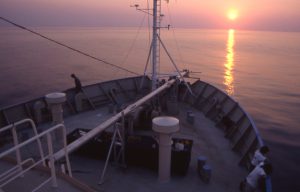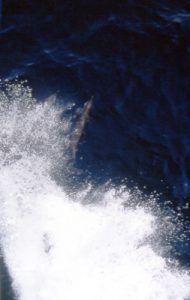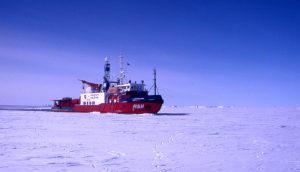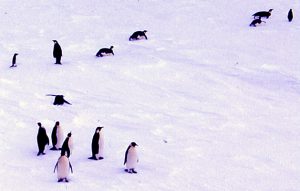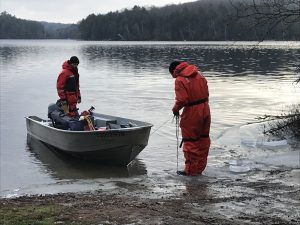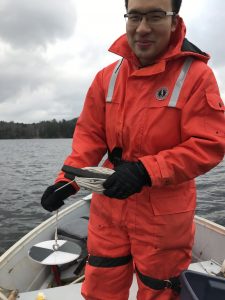I currently have a number of active field projects in western Lake Erie, Lake Simcoe , the Algonquin Park, the Toronto Harbour and Lake Ontario. Locations of some ongoing and recent field projects are shown on this map.
Recent field work has focussed on winter limnology, seiches in large lakes, the interaction between internal seiches and fish habitat usage and how the physics of sound influences fish telemetry devices.
Ice rescue course in 2023
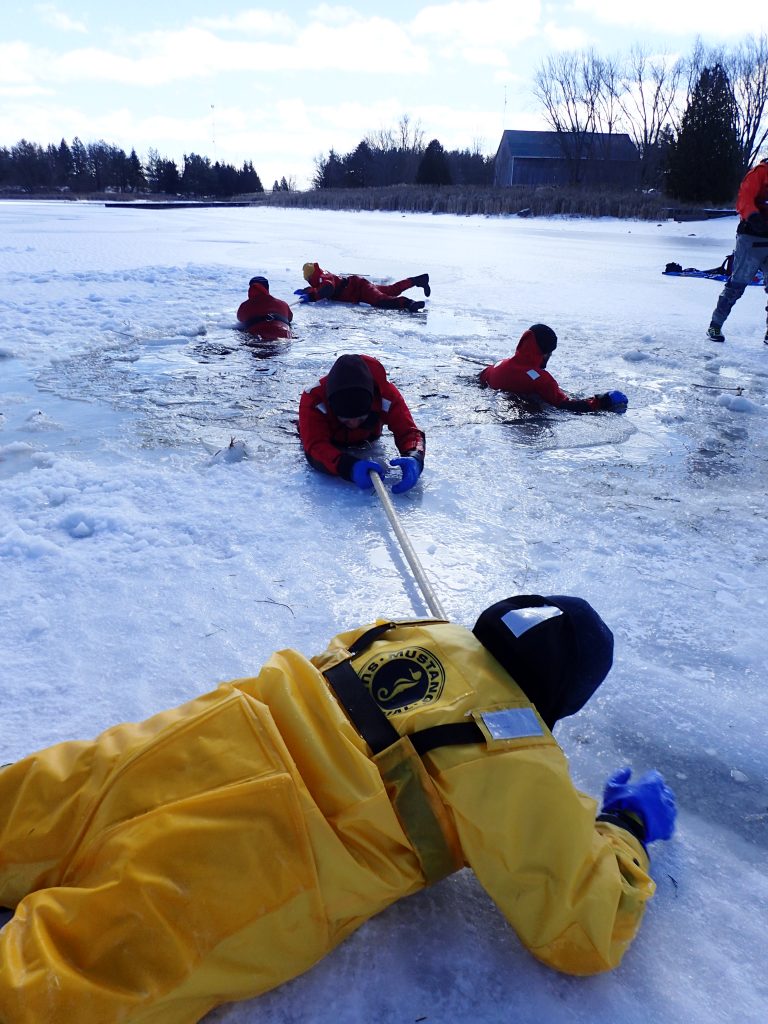
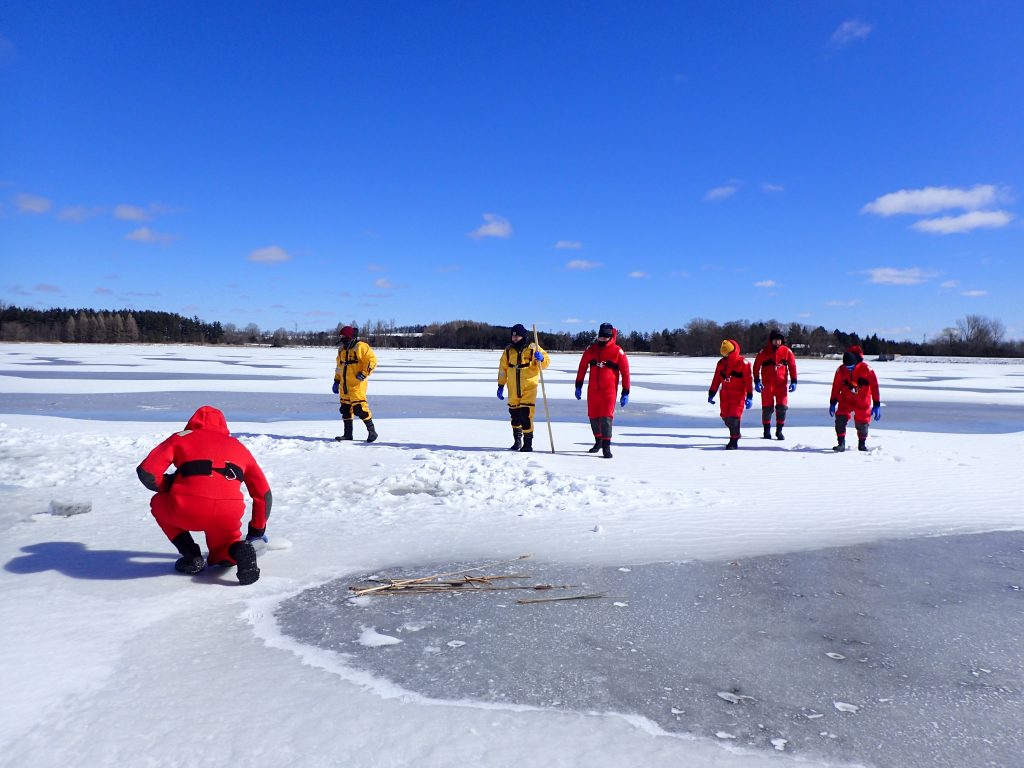
Winter limnology videos and photos
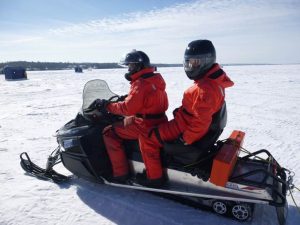
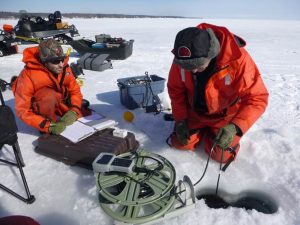
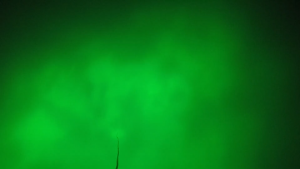
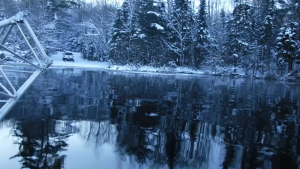
Spatial variability of turbulent mixing in stratified lakes.
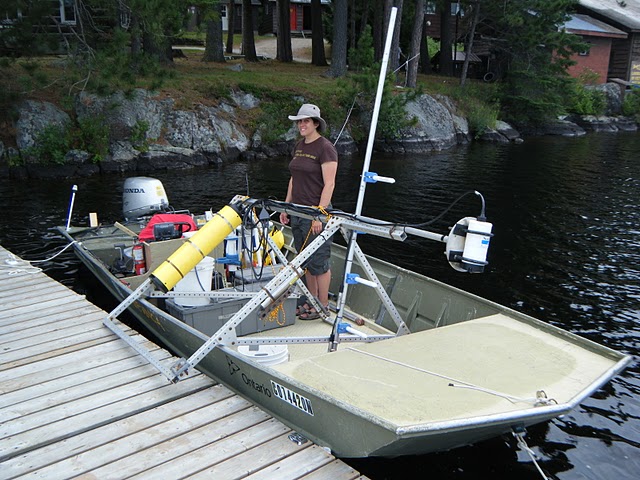
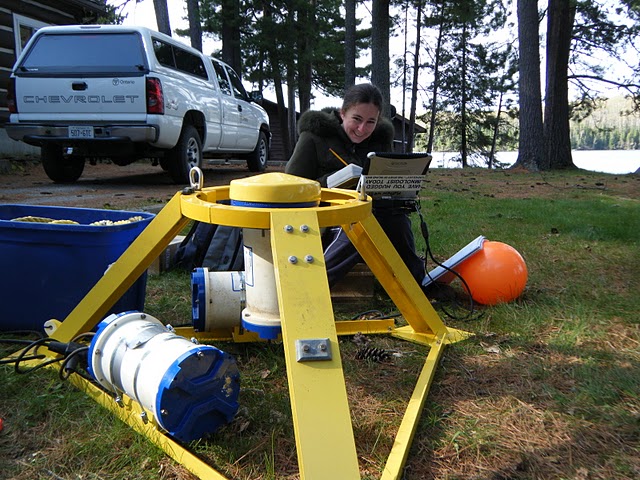
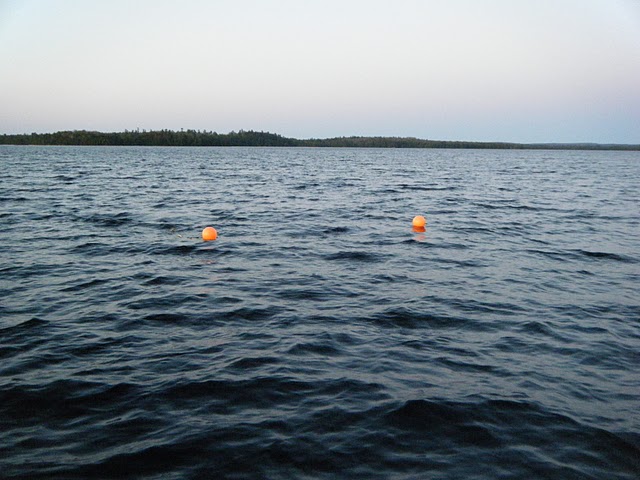
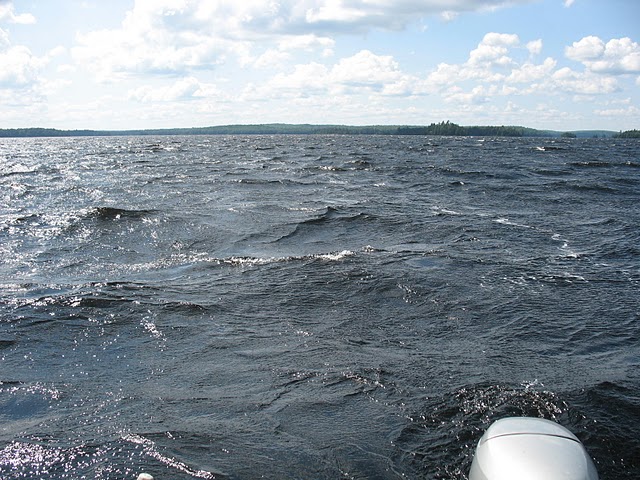
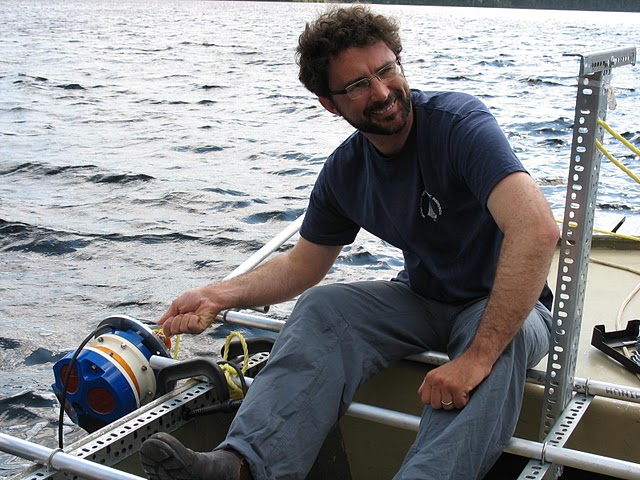
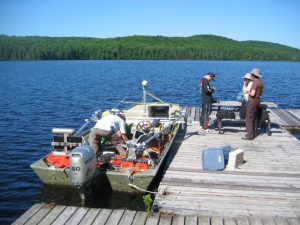
Our field research on Lake Opeongo in the Algnoquin Provincial Park in Ontario aims to determine how the wind can drive mixing in both the epilimnion and the deeper water. PhD student Patricia Pernica studies the mixing in the surface layer using ADCP data combined with fast response temperature records.When the wind blows over a lake it can also cause tilting of the thermocline, leading to internal seiches. The wind driven tilting of the thermocline in a stratified lake can energize bottom boundary layer (BBL) turbulence. Post-Docotal fellow Melissa Coman studies this turbulence using downward looking ADP current profilers.
Our field work at Lake Opeongo is made possible by the ongoing support from the OMNR Harkness field station.
The hydrodynamics of discharged ballast water
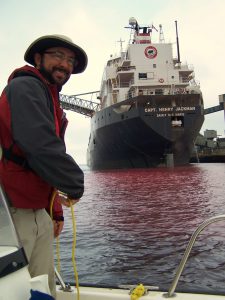
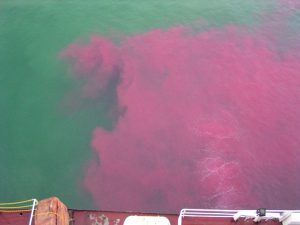
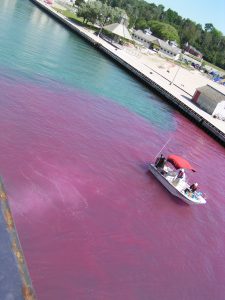
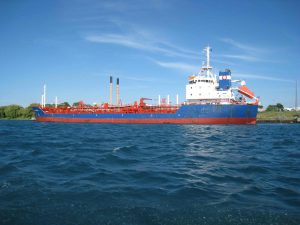
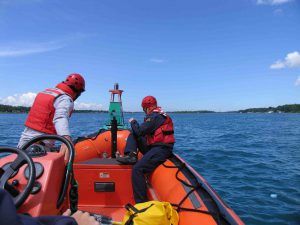
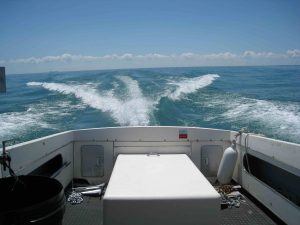
In a collaborative project with DFO biologist Dr. Sarah Bailey we are studing how ballast water disperses from Great Lakes freight ships. The idea is to determine how fast and how far a potential aquatic invasive species might spread after ballast water is discharged. Such infomation will allow us to better understand the likelyhood of establishment success of a new potential invasive species. YaJun Sun is analyzing field data for his PhD project.
Fathom Five National Marine park
Below is an image from July 2006 where we deployed three thermistor chains in Fathom Five National Marine Park on the Bruce Peninsula in Ontario. The temperature field is characterised by strong near inertial oscillation in the thermocline, as shown in the central image where three months of data show a strong seiche motion. Future field work here will study how the local currents influence fish habitat. So far Scott Parker and I have published one article on this field work.
– M.G. Wells and S. Parker. (2010) The thermal variability of the waters of Fathom Five National Marine Park, Lake Huron. J. Great Lakes Res. 36, 570-576 doi:10.1016/j.jglr.2010.04.009
On the right is a satellite image of Georgian Bay, showing the Bruce Peninsula and Fathom Five National Marine Park at the Northern tip.
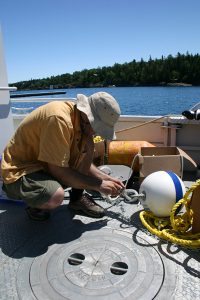
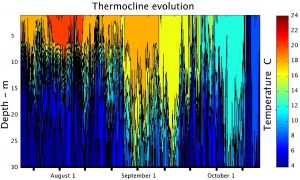
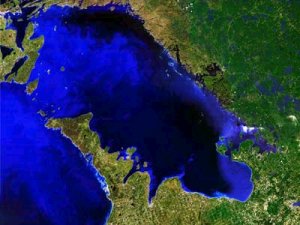
The three moorings were redeployed between April and October 2007 with a help from Scott Parker. These have been able to capture the complete developement of the summer stratification. During August 2007 we deployed a SCAMP profiler in the water column to measure turbulence levels
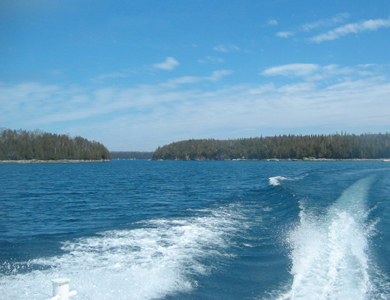
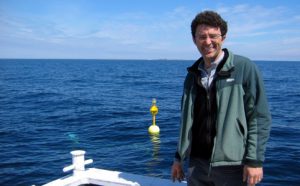
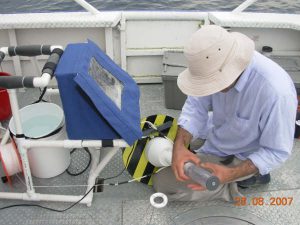
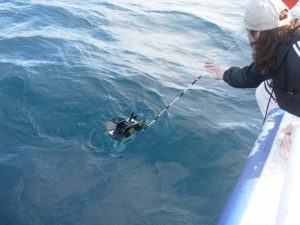
Frenchmans Bay
M.G. Wells and L., Sealock. (2009) Summer Water Circulation in Frenchman’s Bay, a Shallow Coastal Embayment Connected to Lake Ontario, J.Great Lakes Res., 35(4) 548-559 doi:10.1016/j.jglr.2009.08.009
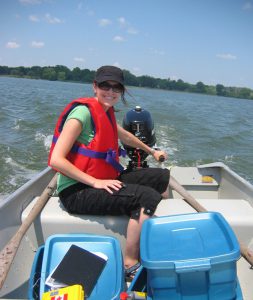
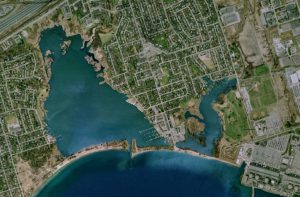
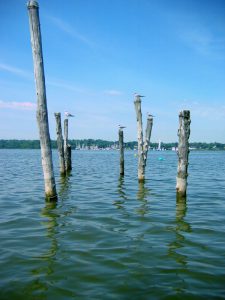
Old images
